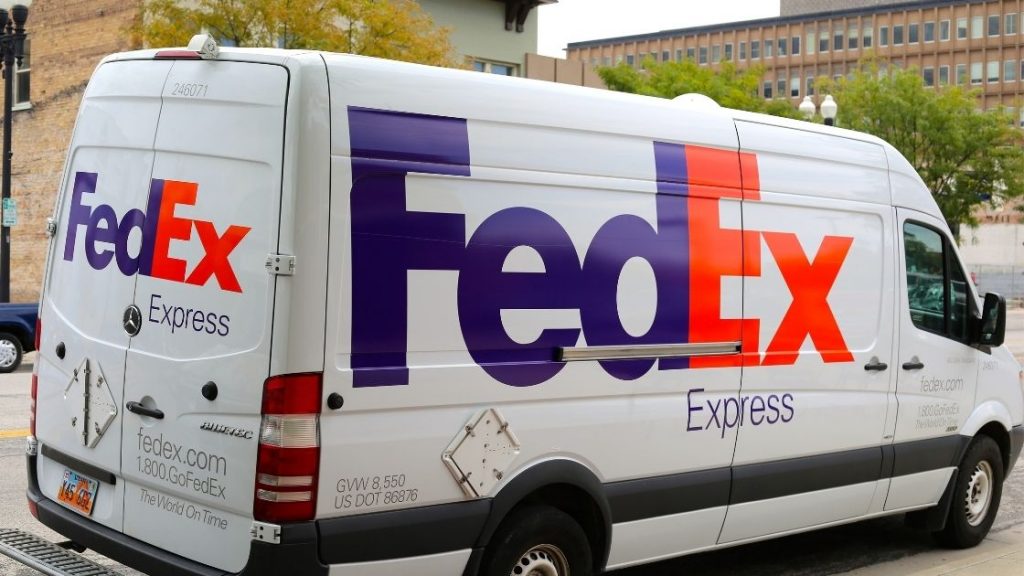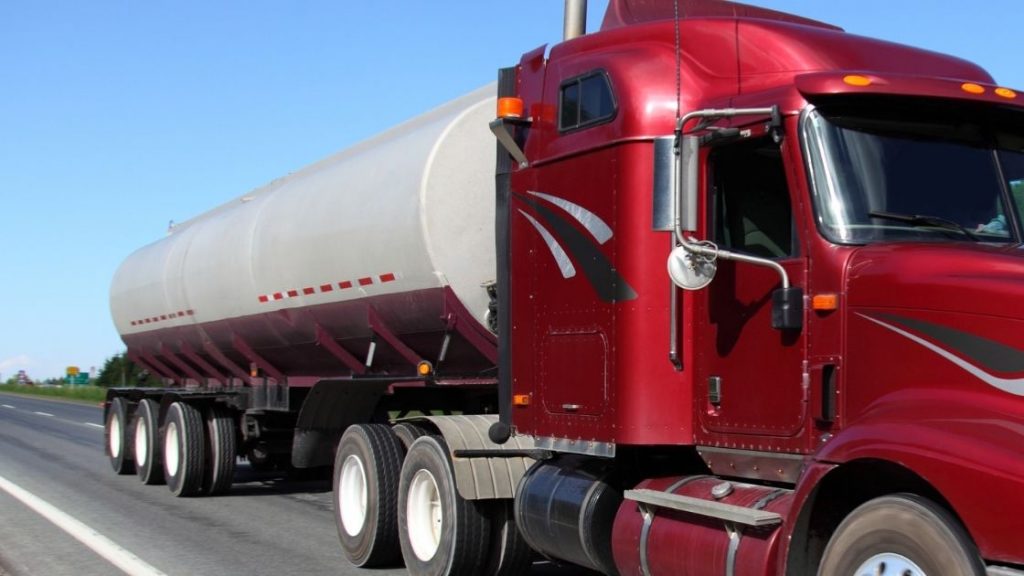Did you know that you can buy FedEx routes and make money off every delivery that is made in your territory?
It’s a business model that has been around for a long time now and there is a vibrant marketplace for FedEx delivery routes.
In this article, we will provide a guide to buying FedEx delivery routes in 5 easy steps:
Step 1: Know your budget and goals
- How large a FedEx business should you buy?
- Getting your financial house in order
- What type of FedEx route is best for you?
Step 2: Understand FedEx ISP requirements
- Understand FedEx eligibility requirements (we have a chart that lays it out)
Step 3: Find available FedEx routes
- Best places to find routes for sale
Step 4: Evaluate FedEx route listings
- How to conduct due diligence
Step 5: Contracting and financing
- Review contracts
- Financing options
- Down payment requirements
We will also cover the pros and cons of owning FedEx routes so you have a more complete picture of what’s really involved in operating this type of business.
Before we dive into all of this, let’s tackle some basic (but important) questions around FedEx routes in general.
If you want to skip the introductory stuff, you can jump ahead to the “Buying a FedEx Route in 5 Easy Steps” section by clicking on this link.
This post may contain affiliate links. If you click on a link and complete a transaction, I may make a small commission at no extra cost to you.
The information contained in this post is for informational purposes only. It is not a recommendation to buy or invest, and it is not financial, investment, legal, or tax advice. You should seek the advice of a qualified professional before making any investment or other decisions relating to the topics covered by this article.
What Is a FedEx Route?
A FedEx route is a FedEx Ground delivery route offered by FedEx to independent businesses. There are two types of FedEx routes: (i) a FedEx Ground Pickup and Delivery (P&D) route which delivers to homes and businesses within the designated area; and (ii) a FedEx Ground Linehaul route which provides long-distance transport.
The P&D route is localized and usually serviced by vans and box trucks. These routes cover dedicated territories that are determined by FedEx. The linehaul route spans many miles and is serviced using tractor trailers.
Source: FedEx
This article focuses on buying P&D routes, as they are the simpler to buy and manage. If you are interested in a FedEx linehaul route, they will entail a bit more risk, but also can provide stronger profits (more on that later). You should also bear in mind that these routes may be a bit more unpredictable and the risks may be greater, depending on the type of linehaul route you purchase.
How Profitable Are FedEx Routes?
FedEx routes have outstanding profit potential. Profit margins run between 10%-45% of gross revenue. Profit margins will be in the lower end of the range if you operate a FedEx P&D route and will increase if you operate FedEx Linehaul routes.
Here is a chart showing expected profit margins for various types of FedEx Routes:
|
Type of FedEx Route |
Profitability |
|
FedEx Ground P&D Route |
10%-25% of gross revenue |
|
FedEx Linehaul Route (solo runs) |
20%-30% of gross revenue |
|
FedEx Linehaul Route (team runs) |
40%-45% of gross revenue |
Source: Route Consultant
In the chart above, I have notations for “solo” and “team” runs for FedEx Linehaul routes. Solo runs are shorter routes that involve a single driver. Team runs are much longer routes that involve multiple drivers.
Ok, so based on these figures, let’s go through an example of potential profitability.
If your gross revenue is $1,000,000 and you own a FedEx Ground P&D route, you can expect to make a profit of $100,000 to $250,000 per year. With the same gross revenue, you can expect to make a profit of $400,000 to $450,000 per year if you own a FedEx Linehaul route with team runs.
Of course, these numbers are based on averages or estimates (as are all of the figures in this article) – your actual results may vary.
How Much Can You Make Owning a FedEx Route?
According to FedEx, the average revenue for a FedEx route owner is $1.5 million (updated now to $2.3 million!). Digging a little deeper into Fedex’s numbers, there are 4,105 owners that make over $1 million per year and the top owner makes $24 million per year. Astonishing!
That figure represents the entire revenue for all routes owned by a single business owner, but does not reflect deductions for operating costs.
To determine profitability, you will need to deduct expenses from revenue.
Based on available data, the annual profit per route is between $30,000-$40,000 and the average cost of FedEx Route is around $100,000 according to Buyersmarketinc.
That translates to an average ROI of between 30% to 40%.
There is no information readily available on the average number of routes owned by FedEx independent contractors.
However, according to Routeadvisors, five routes is a manageable number for a single route owner. In fact, based on ISP changes implemented by FedEx in 2020, FedEx route owners must now own a minimum of five routes and meet certain other requirements. More on that later.
How Many FedEx Routes Can You Own?
Five routes may be a manageable number, but there are plenty of route owners that own way more than 5 routes.
There is no set limit on how many FedEx routes you can own. A route owner is limited only by their resources and their level of determination to grow their business.
How Much Are FedEx Routes Worth?
On average, a FedEx route is worth between 2.5 times and 3 times the free cash flow that it generates. The annual profit per route is between $30,000 and $40,000 per year, so if you multiply that amount by the industry multiple, you get a range between $75,000 and $120,000 per route.
As we discussed earlier, the average cost of a FedEx route is $100,000, so our calculation lines up pretty well with that figure.
Of course, the actual worth of a route or package of routes will be determined by market demand, but these estimates should provide a useful barometer of what you can expect to pay when buying a FedEx route.
Buying A FedEx Route in 5 Easy Steps
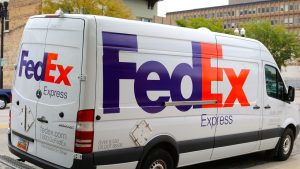
Ok, so we’ve covered off on the introductory stuff. Now let’s dive into the step-by-step guide to buying your FedEx Route.
Step 1: Know Your Budget and Goals
Before you start looking for FedEx routes, you should know the answer to some key questions:
How large of a FedEx route business do I want to buy?
Perhaps the most important question to answer. You can’t start an effective search until you know you how large a business you want to buy and how much you want to pay for that business.
Is my financial house in order for down payment and financing purposes?
Basically, you need to know how much cash you have (and want) to invest in this business and ensure that you are prepared to obtain financing for the purchase (have your records in order and make sure your credit is in good shape).
What type of FedEx route do I want to buy?
As we covered already, there are two types of FedEx routes you can buy: P&D routes and Linehaul routes. You need to understand the trade-offs when choosing one over the other and be comfortable with that decision.
For P&D routes, you will have less profits, but will also have less complications and risks. If you are just starting out, this may be the safer option for you.
Linehaul routes, in contrast, allow you to potentially make more money, but your trucks will be more expensive to buy and maintain and your drivers will need to be more specialized (will need commercial driver’s licenses or CDLs, for short). Reliable and safe CDL drivers may be hard to find and keep. And, of course, the possibility of catastrophic accidents is much greater when hauling packages via tractor trailer.
Step 2: Understand FedEx ISP Requirements
If you want to own a FedEx route business, you will need to sign their Independent Service Provider (ISP) agreement. That agreement has specific requirements around various aspects of the route delivery business that you need to evaluate and follow.
This chart shows key requirements under the FedEx ISP Agreement:
| General Requirement | Description |
| Must be a non-profit corporation | No LLCs, LLPs, sole proprietorships, partnerships or limited partnerships allowed |
| Must employ all personnel | Must have responsibility for the following: -Employer-related expenses -Payroll deductions -Training personnel -Ensuring employees are legally allowed to work in US |
| Must follow agreement terms | General contractual obligations include: -Maintain a safety and compliance program -Corporation in good standing -Service reliability -Vehicle maintenance -Maintain image of FedEx -Remain committed to FedEx business |
| Must comply with route requirements | ISP Agreement requires: -Minimum ownership of 5 routes or 500 stops per day -Cannot hold more than 15% of routes in a given termination (subject to certain exceptions) -Must provide both business and home deliveries within territory |
Sources: FedEx and KR Capital
Obviously, if you are serious about pursuing this, you will eventually need to set up a corporation that will sign the ISP agreement. A qualified lawyer should be able to help you do that.
You will also need to comply with all of the other requirements under the ISP, including maintaining a safety program and having all other employee-related processes in place.
It goes without saying that when you are operating in the trucking industry, you must also comply with all Department of Transportation and Federal Motor Carrier Safety Administration rules and regulations.
So with that important background information covered, let’s move on to the fun part: finding the perfect route for you!
Step 3: Find Available FedEx Routes
Now that you have a clear picture of your financial situation and the type of FedEx route you want to buy, you can start looking for routes that meet your criteria.
The simplest way to find and buy a FedEx route is to go online and check out the various sites offering them for sale.
Let’s start with the most obvious place: FedEx itself. They have routes available for sale on their website at buildagroundbiz.com.
There are third-party sites you can explore as well.
Here is a list of sites that offer FedEx routes for sale:
Step 4: Evaluate FedEx Route Listings
As you look through the various listings, you should be getting a pretty good picture of what types of numbers a FedEx route business should have. If you find one that looks promising, you should begin the due diligence process for that listing.
Conducting Due Diligence
Before buying a FedEx route business, you must conduct thorough due diligence. This includes evaluating the numbers, looking at employee information (check turnover rates, length of employment, and other signs of stability), and examining the age and condition of the vehicles in the fleet.
You also want to sanity-check the numbers provided by the seller by comparing them against what is standard in the industry. If the numbers looks meaningfully better than the rest of the industry and the seller is basing the purchase price on those numbers, you should be cautious and get to the bottom of what’s going on.
Route Consultant offers a helpful summary of what the numbers should be based on industry averages.
This can all be a bit confusing if you are new to this. If you want help understanding the numbers or any other aspect of the purchase, you can hire a due diligence expert to assist you. When I searched online, there seemed to be a number of them specializing in this space.
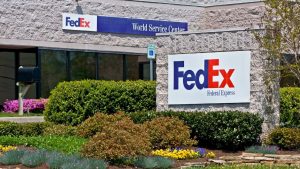
Step 5: Contracting and Financing
Once you have settled on a FedEx route that you would like to buy, you will need to enter into a contract to buy that route and review and sign all other required legal documentation associated with the purchase.
You should not be winging this. Engage a qualified lawyer to help you navigate this process.
How Do You Finance a FedEx Route?
For most people, buying a FedEx business will require some form of financing. What types of financing are available? The usual suspects are SBA loans and conventional loans, but you may be able to secure seller financing if the seller is willing to offer it.
If you prefer to operate online, you may want to check out Fundera. They are affiliated with Nerdwallet and offer small business financing options from a variety of potential lenders. You fill out one application and they provide you with a list of lenders suited for your situation.
So how much money will you need to buy a FedEx route with financing?
That is going to be governed by three things: (i) the final negotiated purchase price; (ii) the amount of down payment needed; and (iii) the amount of working capital needed.
How much down payment do I need to buy a FedEx route?
To minimize the amount of your down payment (and your overall costs), you should negotiate down the purchase price of your FedEx route business.
Once you have settled on the final purchase price, you will need between a 10%-25% down payment on that purchase price to buy a FedEx route. For smaller purchases, that translates to approximately $60,000-$100,000 for a down payment.
Source: Route Consultant
You also want to keep some cash reserves on hand for working capital. Route Consultant recommends $75,000.
So even for a relatively small purchase, the starting costs are significant. It’s certainly something to keep in mind in determining whether this business is right for you.
Once you have signed the paperwork and completed the financing, you are well on your way to becoming a successful FedEx route owner. Of course, this is just the beginning. You are buying a real business and will need to make sure that it runs smoothly.
On that note, let’s examine some of the pros and cons of owning a FedEx route business.
Pros and Cons of Owning a FedEx Route
Before you complete the purchase of a FedEx route, you should evaluate the pros and cons of owning a FedEx route business. We’ll cover all of them in detail, but here’s a table that provides a topical summary of the pros and cons.
|
Pros of Owning a FedEx Route |
Cons of Owning a FedEx Route |
|
You are partnering with FedEx |
FedEx route business is expensive |
|
Strong profit potential |
Hiring, training and keeping employees |
|
Passive income potential |
Truck maintenance |
|
Robust resale market for FedEx routes |
Must follow FedEx rules |
|
Independence |
|
Pros of Owning a FedEx Route
You Are Partnering With FedEx
FedEx is a massive company with incredible brand recognition. They have established processes and procedures that have been tested and proved. This means that all of the infrastructure is in place, except for your little piece, which is a very targeted operational one.
You do not need to build a business from scratch. You do not have to worry about marketing, acquiring customers, or competition. You simply need to focus on making your promised deliveries on time.
That is a tremendous business advantage. It also allows you to focus completely on optimizing a very discrete set of operational tasks. By partnering with FedEx you become part of a multi-billion dollar enterprise that is a proven winner and not likely to go away.
Strong Profit Potential
We have covered the profit potential of FedEx routes in detail already, so I won’t go into it again.
Bottom line, you have the potential to generate exceptional profits from running FedEx routes.
Passive Income Potential
One of the amazing benefits of owning a FedEx route is that it can be mostly passive once you have a reliable team of drivers and managers. Passive income is the dream, isn’t it?
But mostly passive doesn’t mean completely passive.
You still need your hand on the steering wheel of your business. Your trucks will need servicing and may sometimes need repairs. Your employees may not show up or may quit. There may be unexpectedly high volume on a given day that you will need to accommodate.
In short, your operations need to be structured and maintained in such a way that the packages get delivered no matter what happens. Maybe that means that your manager should be ready to drive if needed. Maybe that means that you will need to drive if needed. Maybe you need an extra truck on stand-by in case one of your trucks breaks down.
It can be stressful and will require your attention at times, but if have a reliable and competent team to do the actual deliveries for you and take care of the normal day-to-day activities, and your contingency planning is well-thought out and effective, your FedEx routes can be a terrific source of mostly passive income.
Robust Resale Market For FedEx Routes
FedEx routes have undeniable market value and a robust marketplace (as we discussed before). This means that you can generally sell your routes when you are ready to move on.
When selling, having the FedEx name behind you only helps. Buyers will be more likely to trust a business model that is tied to the FedEx brand. This will make your FedEx route far easier to sell than an unknown business with comparable earnings.
Independence
Owning a FedEx route business can be liberating, especially if you feel trapped by a 9-5 job. This is an obvious point, but can’t be ignored. You need to make sure your operations are running smoothly, but as the owner of the business, you do not need to answer to anyone. Hard to put a price on that.
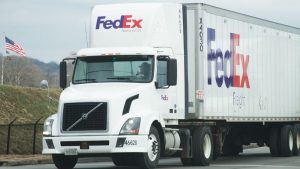
Cons of Owning a FedEx Route
A FedEx Route is Expensive
A FedEx Route business is expensive to start. If you add up the down payment to buy the FedEx routes and the cash reserves you will need as working capital, the cost of starting a FedEx route business can be very high.
Even buying a small FedEx route business can cost you over $100,000. If you want to buy an average-sized FedEx route business, you will pay much more.
According to Route Consultant an average priced FedEx ground route requires a down payment of approximately $150,000-$200,000, plus $75,000 in working capital.
That’s a lot of money any way you look at it.
Related reading: Interested in a passive income business that is more affordable to start? You may want to check out my articles on these other passive income businesses that have a much lower cost of entry:
Or if you don’t want to spend any money to start earning passive income, here are 15 truly passive income ideas that require no money to start.
Hiring, Training and Keeping Employees
Running a FedEx route business is going to require dealing with drivers (and managers if you use them).
Whenever you manage employees, there is always risk. Your drivers may quit right before the winter holidays when you are getting crushed with package volume. Your manager may move on to bigger and better opportunities. All sorts of problems can arise when dealing with people.
And finding qualified and reliable drivers is no easy task. In addition to FedEx’s requirements for drivers, you will need someone who can figure out the routes, interact with recipients, and most importantly, show up on time and do the job reliably.
You will also need to make sure they are trained, which can take some time. Your manager can be a big help here, but as the owner, you need to ensure it gets done properly.
Note: All of this is just for a normal P&D route. If you are operating a linehaul route, the task of finding qualified and reliable drivers is much harder.
Truck Maintenance
If one of your trucks breaks down, you will need to fix it asap. Or you will need another truck to step in. That’s because the packages must get delivered, even when the unexpected happens.
And to be honest, trucks breaking down is not an unexpected occurrence. They will break down at some point given how much they are used.
Of course, these repairs and maintenance issues will impact your bottom line. So it is important to find a good mechanic that will take care of your repairs promptly and at a fair price.
Note: Again, this is for normal P&D routes. If you are operating a linehaul route, the costs of maintenance are going to be much higher.
Must Follow FedEx Rules
As we discussed, there are many advantages to partnering with FedEx. But there are some drawbacks as well.
Most notably, you must follow FedEx’s rules outlined in your agreement with them. They call the shots in this area.
And rules relating to FedEx Ground can evolve over time. A perfect example is the route-related ISP changes that FedEx implemented in May of 2020. We covered these requirements in the FedEx ISP requirements chart already, but here’s a recap.
Under these rules, FedEx route owners must have at least 5 routes or 500 stops per day. They also must run both business and residential routes within their territory. These were significant changes and caused a lot of disruption for FedEx route owners, with many combining routes with other owners to meet the new requirements or selling their routes altogether to avoid having to comply.
Source: KR Capital
The bottom line is that FedEx exercises a lot of control over their processes and programs. Changes that they make in the future may not always work to your benefit. It’s a real risk and something you should carefully consider.
Conclusion
Owning a FedEx route can be a terrific way to earn great income and get out of the rat race.
But as you can see by now, it’s not as simple as buying a route and waiting for the money to roll in.
If you want to succeed as a FedEx route owner, you need to (i) buy the right route, (ii) hire, train, and retain a competent and reliable team, (iii) have effective contingency plans when it gets busy or your trucks break down, and (iv) thoroughly understand and remediate other key risks involved in operating this business.
Related Reading
If you want to learn about other great passive income businesses, check out my piece on businesses that run themselves. In that article, I cover some great businesses that can generate attractive levels of return without a lot of day to day involvement by the owner (obviously, FedEx routes are included in the list, but there are many more). Check it out here.
